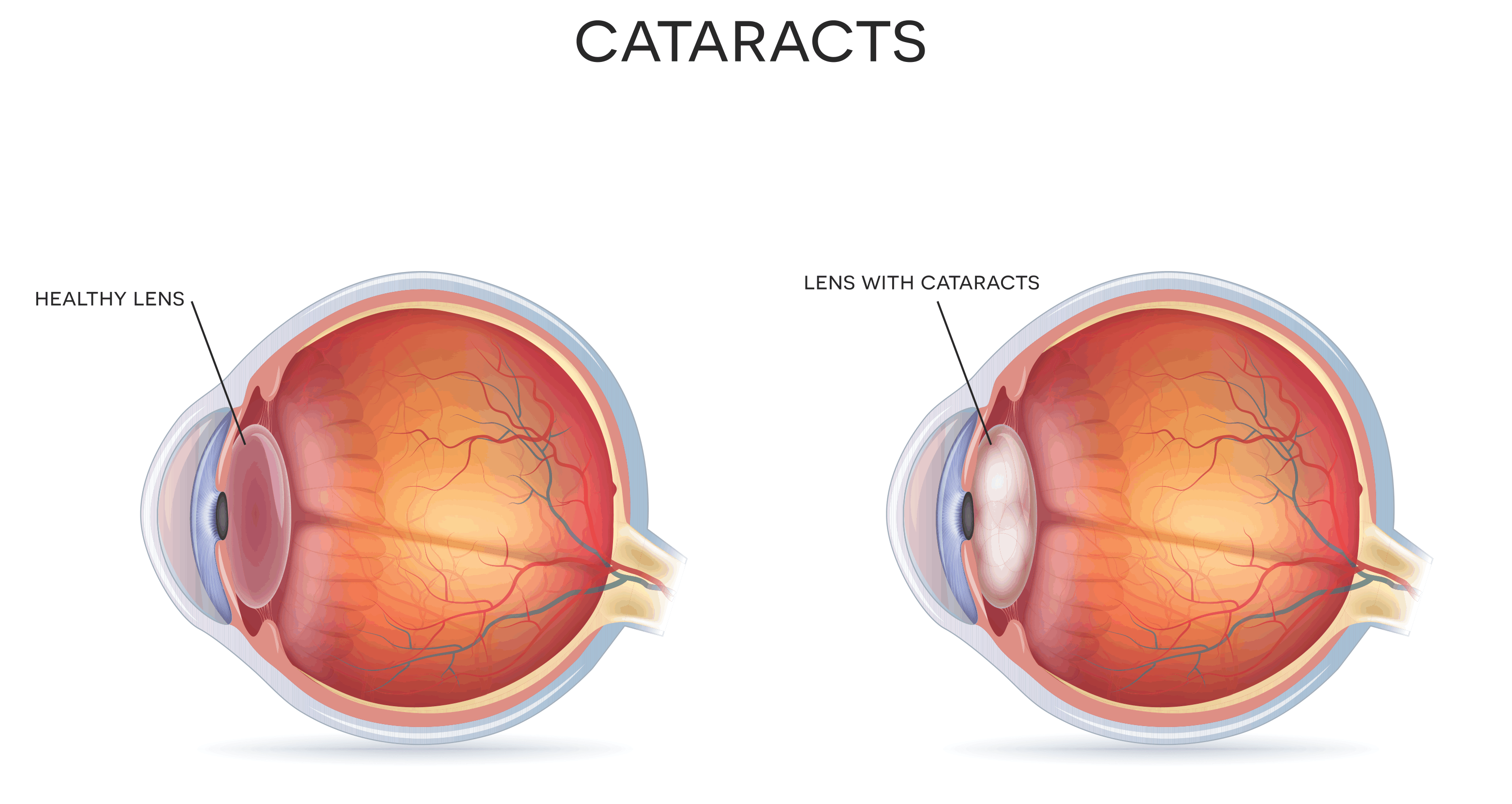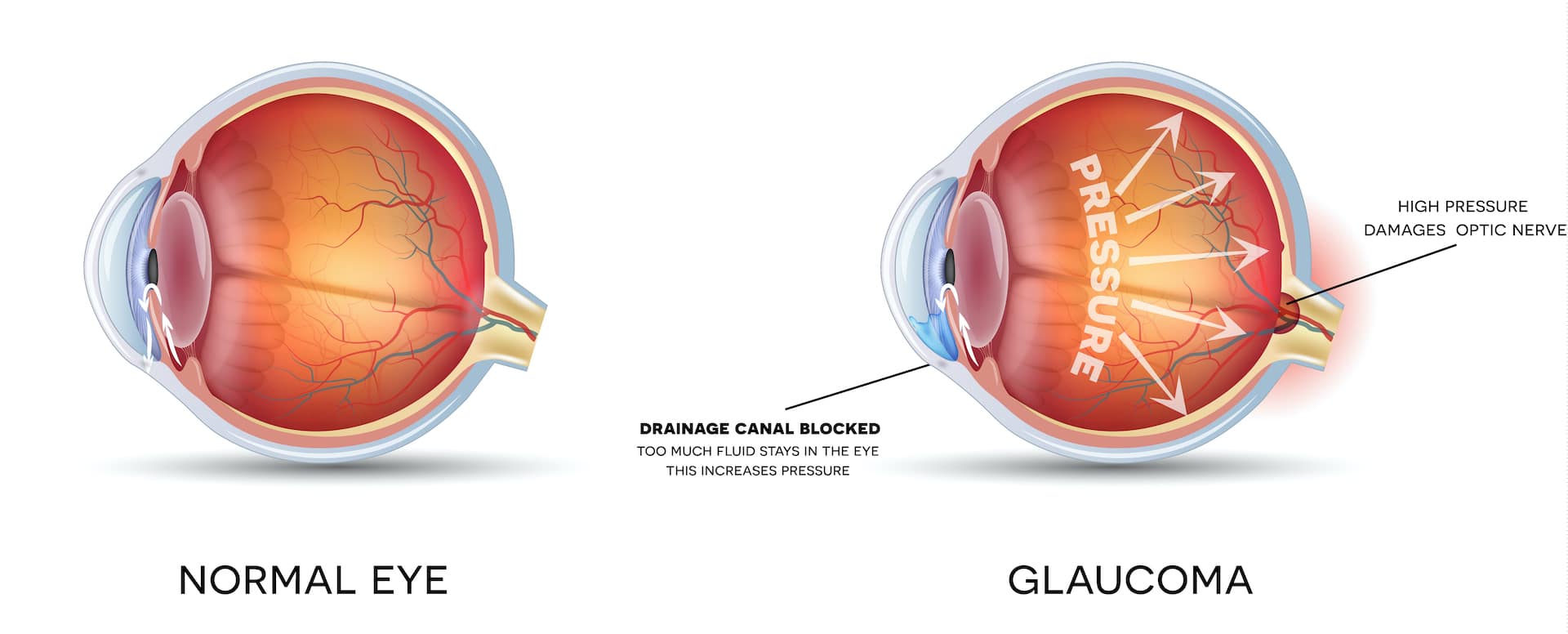
As we age, our eyes undergo changing conditions, and in this short article we will highlight some of these conditions.
Age-related vision loss
The term refers to the difficulty we have in focusing on near objects as we age. It is Greek for ‘old sight’. Almost all of us experience presbyopia after the age of 40.
When we grow older, our eyes’ lenses become stiffer and lose their elasticity, making it more difficult to focus images from near objects on the retina. If you have this condition, readers’ glasses, bifocals, or varifocals can be prescribed to correct it.

During aging, the transparent lens of the eye becomes cloudy and opaque. This causes difficulty in seeing things clearly, and common symptoms include blurry or cloudy vision, dimmer colours, worse vision in low light, and a greater sensitivity to bright lights.
As cataracts develop gradually, symptoms might not be easily observed, although your optometrist will be able to detect them during a routine eye examination. In order to correct cataracts, you can alter your glasses prescription, or you can undergo cataract surgery, in which the eye’s natural lens is replaced with a plastic one.
It is generally believed that cataracts are caused by aging, however, you may be more susceptible to them if you have a family history of cataracts, smoke, drink excessively, or are diabetic. Experiencing UV radiation without protection is also a contributing factor to cataract development, which is why it is essential to wear sunglasses and wear your glasses with UV coated lenses.
Glaucoma

A build-up of fluid in the eye causes glaucoma, a disease that damages the optic nerve. People over the age of 70 are at the greatest risk for developing glaucoma, though it can occur in younger individuals as well. Diabetics and those with a close relative suffering from glaucoma are also at greater risk.
The most common form of glaucoma is painless and develops gradually, so it can be difficult to detect by yourself. Opticians can perform several tests to determine if you have glaucoma. Symptoms such as loss of peripheral vision, intense eye pain, nausea and vomiting, headaches and red eye, as well as rings around lights should be addressed by your optician as soon as possible.
Glaucoma must be closely monitored, so patients will typically undergo more frequent eye examinations or hospital eye examinations. There are numerous ways to treat glaucoma, most commonly by using drops to reduce the pressure in the eye. Laser treatment or surgery may also be used to unblock the tubes that remove fluid from the eye if drops are ineffective.
AMD
Age-related Macular Degeneration (AMD) is not known to have a specific cause, however it has been associated with obesity, high blood pressure, smoking, and having a family history of AMD. Symptoms include blurred central vision, seeing wavy lines, larger and less bright objects, and seeing things that are not there. It affects the central vision, which makes reading and driving more difficult.
AMD can be classified as either wet or dry. AMD that occurs moist is more likely to develop quickly, often within a few weeks or months, as opposed to AMD that develops dry over time.
However, special visual aids can relieve the symptoms of dry AMD, and in some cases photodynamic therapy, which uses a special light to destroy abnormal blood vessels that cause wet AMD, can prevent the condition from worsening. There is no current cure for dry AMD, but regular injections directly into the eye can alleviate the symptoms.
AMD can be slowed down by taking special nutritional supplements. Eating foods high in lutein, such as spinach, broccoli, kale, and corn, can also help, but they don’t contain the same amounts as the supplements.

Over 65s tend to suffer from dry eye syndrome, which is caused by inadequate tear production or excessive evaporation of tears. There is a great importance to tears in transporting nourishment to the eye as well as lubricating and protecting it. Dry eye syndrome is characterized by several symptoms, including gritty, tired eyes, tenderness, blurry vision, red eyes, and an increased sensitivity to light.
In addition to smoking and drinking excessively, spending a great deal of time in air conditioned environments, using a monitor without frequent breaks, wearing contact lenses, or taking prescription medications for blood pressure or depression, you are more likely to develop dry eyes.
Artificial tears are usually effective in treating dry eye syndrome, but if the symptoms are severe, more specialized medications, or even surgery, may be required.

